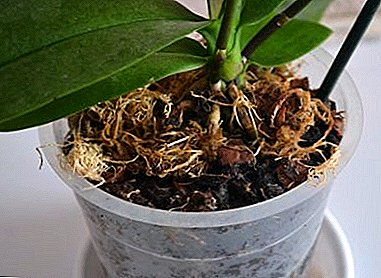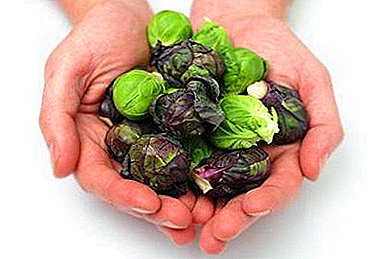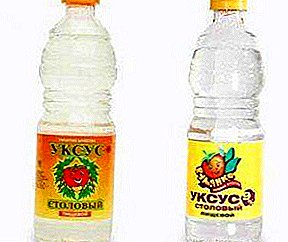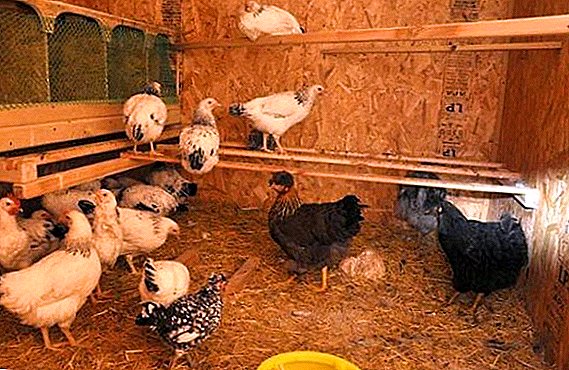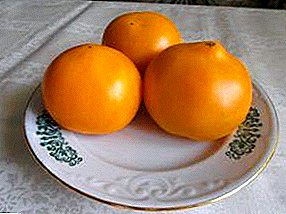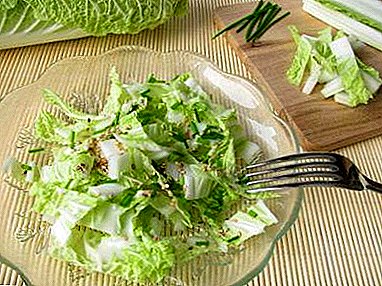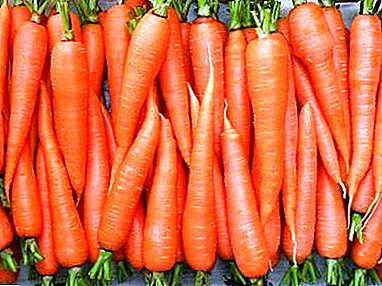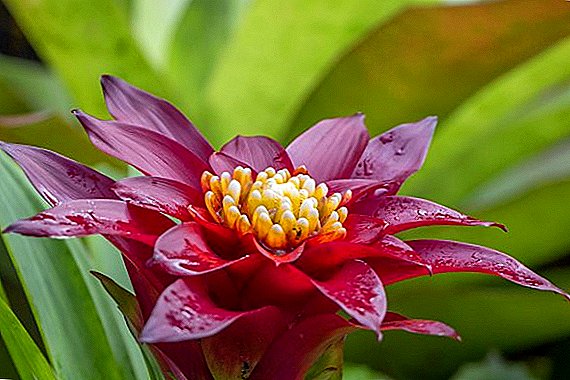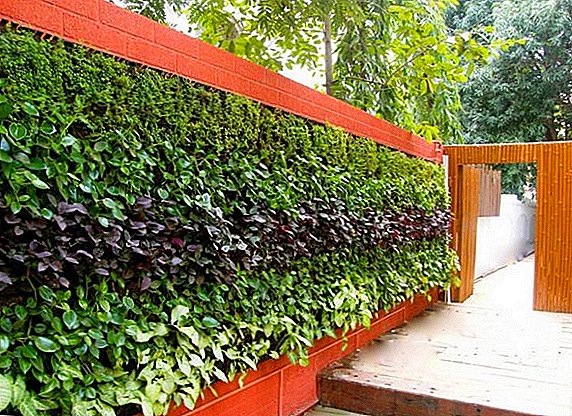 Usually, the reason for using vertical beds is a small area of the plot, which does not allow growing all the desired crops. Initially, this device was created for growing flowers on balconies and loggias. However, many gardeners and gardeners considered the idea of a vertical arrangement of plants quite practical and interesting. There are many advantages to vertical beds, besides the rational use of space. There are also many ways to build beautiful and functional beds.
Usually, the reason for using vertical beds is a small area of the plot, which does not allow growing all the desired crops. Initially, this device was created for growing flowers on balconies and loggias. However, many gardeners and gardeners considered the idea of a vertical arrangement of plants quite practical and interesting. There are many advantages to vertical beds, besides the rational use of space. There are also many ways to build beautiful and functional beds.
Pros and cons of vertical beds
As we have already indicated, the main advantage of this design is the possibility of growing many plants with a lack of land. But this is not the only plus vertical beds. 
Other design advantages:
- A wide selection of materials for construction.
- Decorative and aesthetics - neatly and originally made, vertical beds will always attract the attention of guests and become a real highlight of the yard.
- Rational use of space - a vertical structure can be placed anywhere in the yard.
- Saving of time for processing of the earth - in a vertical design it is not necessary to make weeding from weeds, calculate the distance between plants, etc.
- Mobility - many variants of vertical structures are not stationary, that is, if necessary, they can be moved to another place, supplemented with modules.
- Reducing the incidence of fungal infections, less risk of attack by pests.
- More simple and easy care for a person (it is easier to harvest, water and process plants, there is no need to bend down, etc.).
You will also be interested to learn how to make the beds in the country with their own hands, how to make high beds, how to protect the beds, how to make a pyramid bed, how to make warm beds, how to make a warm Rosum bed.

Did you know? Only 11% of the land on our planet is suitable for growing crops. The remaining 89% are over-wetted, over-dried, or have no nutrients.
But this design and disadvantages are not without, the main of which are:
- The need for frequent watering and feeding. It is explained by the faster drying of the earthen coma than in the garden. Therefore, it will be necessary to water the plants more often, especially in the period of extreme heat. In addition, in a limited space, plants will have nowhere to take nutrients.
- Limited amount of earthy coma. Most designs have small or medium sized containers. For this reason, not all crops can be grown in vertical beds, but only those with a superficial, not too extensive root system.
- Suitable only for annual plants. In a small container during the period of winter frosts, the ground will freeze over, which will inevitably damage the root system. Therefore, it is impossible to grow biennial and perennial plants in this construction.
- Often a large amount of soil is used to fill the containers.

These drawbacks stem from the design features. Minimize the disadvantages of vertical beds is quite possible. For example, to replenish moisture, you can use a hydrogel or provide a drip irrigation system (which you can do yourself). 
It is also worthwhile to choose the plants for cultivation in this design, as discussed later.
What plants are suitable for?
Vertical beds are not suitable for plants with a highly developed root system, extending 1 m or more deep into the ground.
Although you can find pictures on the Internet where cabbage, tomatoes or strawberries look beautiful in a vertical structure, in practice people who grow these vegetables and berries will be able to confirm that they require a lot of space, moisture and nutrients for normal growth.
What can still be grown on a vertical structure:
- various greens: lettuce, onion, spinach, basil;
- annual flowers with a small root system: stunted marigolds, petunia, iberis, ageratum, stunted lobelia, dwarf aster;
- radish;
- strawberries and strawberries - provided there is enough land in the container.

How to fill a container
The soil must be selected in accordance with the needs of the plants that you are going to grow on a vertical garden bed.
- For greens and radish. Suitable pH neutral, light, loose soil. You can buy a ready store substrate or prepare a mixture of the following components: peat, vermiculite, and garden soil in equal parts.
- For strawberries and strawberries. This culture requires light, slightly acidic (pH 5-6) sandy or sandy-loamy soil with high fertility and good water permeability. The mixture is prepared from equal parts of such components: turf ground, peat, humus and sawdust.
How to organize a watering system
In most designs, no special irrigation system is required: vertical beds from flowerpots, tires, bags and pallets can be watered in the usual way, like garden beds. Only in some constructions it is advisable to make a special irrigation system. 
So, during the construction of beds from PVC pipes, barrels, building nets, it is necessary to organize a special irrigation system. It consists of using a thin polypropylene tube installed in the center of the structure. Holes are made on the tube through which water enters the soil.
However, even such moisture may not be enough, and plants in vertical beds may suffer from drought, especially during periods of extreme heat. Therefore, when laying the soil it must be mixed with hydrogel granules.
This substance will accumulate moisture during irrigation, and then the plants will be able to absorb water from the granules as needed.
Material options for construction
The beauty of this design is that for its creation you can use a huge amount of materials, often already without work in your home. 
If you connect a little imagination and creativity, you can get a very functional and decorative structure at the exit.
Below we consider the most popular options for building materials for vertical beds.
From plastic bottles
One of the most simple and common materials for vertical beds. Bottles it is desirable to choose a volume of 1.5-2 liters. They must be clean, and for greater decoration - without labels, one size, shape and color. As a support, it is desirable to make a metal or wooden frame.
You can also hang the bottles by the fishing line or wire to a horizontal bar, placing them one above the other in staggered order. 
There are two ways to trim a bottle:
- cutting in half in the center;
- cutting through a rectangular hole on the side of the bottle.
Important! It is necessary to use plastic containers from food only.
PVC pipes
PVC pipes can be placed in several ways:
- Horizontally. Pipes with a diameter of at least 100-150 mm are cut lengthwise into two halves, installed one above the other to the desired height. Thus it is convenient to grow herbs, herbs and flowers.
- Upright. In this case, round holes are cut on the side walls with a distance of about 15-20 cm (depending on the size of the plant), the pipes are buried in the ground or attached to the support. Inside the soil is poured, and in the holes are laid seeds, seedlings or tubers.

From pallets
To implement this option, you will need a pallet, stapler, burlap and agrofibre. From the inside, the upper part of the pallet should be upholstered with sacking, then outside it is necessary to sheathe the lower part with agrofibre. Then the pallet is placed vertically, the ground is filled up inside, in the burlap it is necessary to make holes-cuts and place the seedlings.
The undoubted advantage of this design is originality, aesthetics, space saving. However, only greens, undersized flowers or strawberries can be planted on such beds. When soil is depleted, it will be necessary to replace it and to do this for this time-consuming procedure of parsing the structure. 
Important! Most pallets are phytosanitary treatments. One of the methods of such treatment is fumigation or fumigation with the use of methyl bromide toxic fumes. The use of such trays for growing food plants is strictly prohibited, since some of the toxic substances remain in the wood and eventually penetrate into the plant. Only heat treated pallets can be used!
Of car tires
Selected tires of different diameters and pyramid mounted on each other after the ground is filled up. This is the easiest way to use car tires.
You can build a more original and functional design, placing the tires pyramid: put 6-7 tires at the base, 4-5 on them, place two tires on the third tier and crown the design with a beautiful garden decor, a flowerpot or a miniature tire.
The more tires on the first tier, the higher the structure will be, so watering can be difficult. 
Important! Automobile tires are not environmentally friendly material, so using them for growing berries, herbs and other edible plants is undesirable.
From barrels
To implement this option, you need a plastic or wooden barrel.
Learn how to make a wooden barrel yourself.
On the side walls it is necessary to cut holes with a distance of about 15 cm (depending on the size of the plant that you intend to grow in a barrel).
Inside the ground is filled up, large straw can be put near the holes in front of the ground. Then you need to plant seeds or seedlings. 
From plastic boxes
With this method, you can build a whole green fence, make a zoning area or hide an ugly fence or wall. If the plastic boxes from under the bottles are very high, the upper part (where the division into cells ends) can be cut, stitched with geotextiles.
Then the boxes are filled with soil, turned over to the side and put one on another like blocks. It remains to plant seeds or seedlings in the ready-made holes. 
From flower pots
Most often, these designs are used for growing flowers, herbs or spicy herbs.
To build a vertical design of flower pots in two ways:
- The construction of the pyramid of pots of different diameters. In this case, the pots need to be filled with earth and from the larger to the smaller to build a pyramid, having each next pot not in the center of the previous one, but at one edge. Thus, in the end, there should be a slide, where the back side will be smooth due to the walls of the pots, and the frontal part will look like steps, on which plants should be planted. You can use pots of any material.
- Placing pots at an angle on a steel support. In this case, it is desirable to take containers of the same or similar diameter from plastic (so that holes can be made). A rod is welded onto the metal support, a hole is made at the bottom of the pots, and at an angle they are alternately positioned on the rod and fastened with wire or adhesive.

From construction mesh
You will need a construction grid with cell sizes of 50 * 50 mm or 100 * 100 mm. The net is rolled into a cylinder with a diameter of approximately 70-100 cm. Coarse straw is filled up with a small layer in the inside of the structure with an outer diameter (to prevent soil eruption), and the soil is laid out in the center.
Then seeds or tubers are planted in the cells and abundant watering is performed. Instead of straw, you can use agrofilm, in which you need to make holes for laying seeds or seedlings. 
Did you know? As many as 33% of all food on Earth comes from bees. Without these small pollinators, cultivating more food plants would be too expensive and complicated.
Out of bags
To implement this option, fabric bags are used, additionally stitched on the sides and at the bottom for strength. Bags made of synthetic material react badly to ultraviolet light and quickly deteriorate, and they are also worse than pass air and moisture.
With hooks or nails, the bag can be attached to a wooden fence, metal support or wall of a building. Inside the ground is poured, on the sides in the staggered order holes are made into which the seeds are laid. In this way it is best to grow flowers. 
How to build pipes: a step-by-step process
The construction of vertical beds made of metal or PVC pipes is a very common option.
So, this material has many advantages:
- strength and durability;
- resistance to weathering (pipes do not rot, do not rust, do not corrode);
- no need for chemical or other processing;
- no need to weed and loosen the soil;
- the plant is less injured during the harvest period.
Did you know? Vertical farms, special high-rise buildings for growing food plants in the city, are becoming increasingly popular. Such farms are fully energy independent, environmentally friendly and allow you to grow plants all year round.
To build a similar structure, you will need the following materials:
- PVC pipes with a diameter of 150 mm;
- polypropylene pipes with a diameter of 15 mm and plugs (for irrigation systems);
- a large piece of burlap;
- tools (drill, hacksaw, chisel);
- reinforced adhesive tape;
- twine;
- soil for the culture that you are going to land.
Next, we consider a phased process of construction of the structure:
- Cut a part of the PVC pipe of the desired height and a part of the thin pipe, which should be 10 cm longer.

- Drill the holes in the upper 2/3 of the thin pipe with an interval of about 15 cm, cover the lower part of the pipe with a plug and secure it with tape or glue.

- Wrap the thin tube with a sacking in one layer and secure with twine.

- Now you need to make holes for plants in a thick pipe. To do this, drill nests with a diameter of about 15 cm, with a distance between them up to 25 cm. If the pipe is attached to the wall, you can make 3 rows of vertical holes, but if the pipe is attached to the crossbar, you can make 4 rows. The lowest nest should rise above the ground by at least 20 cm.

- Cover the thick pipe with a cap at the bottom, place a thin pipe in the center, fill the drainage with a layer of 10 cm, then fill it with soil.
- Set the design in the selected location and secure.
- Now it remains to abundantly moisten the soil and plant seeds, seedlings or tubers.
In fact, this is not all options for the construction of vertical beds. And even these methods have a lot of variations - a bit of your imagination, time and physical labor, and you get an extraordinary and effective vertical design for growing flowers, greenery, and herbs on your home plot.
Feedback from network users
I am attracted to a vertical garden by the fact that it is not necessary to bother with weeds and berries do not lie on the ground.
And you can also use old tires. Under the first slope lay a layer of clay. On the circumference of the tire, cut through holes 6x10 cm at a distance of 12-15 cm one from another. Plants are inserted into the holes, in the slope fall asleep to the garden ground or a mixture of earth, sand, peat in the ratio of 1: 1: 2. The height of the vertical beds can be adjusted. For ease of irrigation and liquid dressing in the center put a pipe with a diameter of 15-20mm with drilled holes with a diameter of 5-5.6mm. "Cylinder" of tires placed on a bright, well-warmed place.



